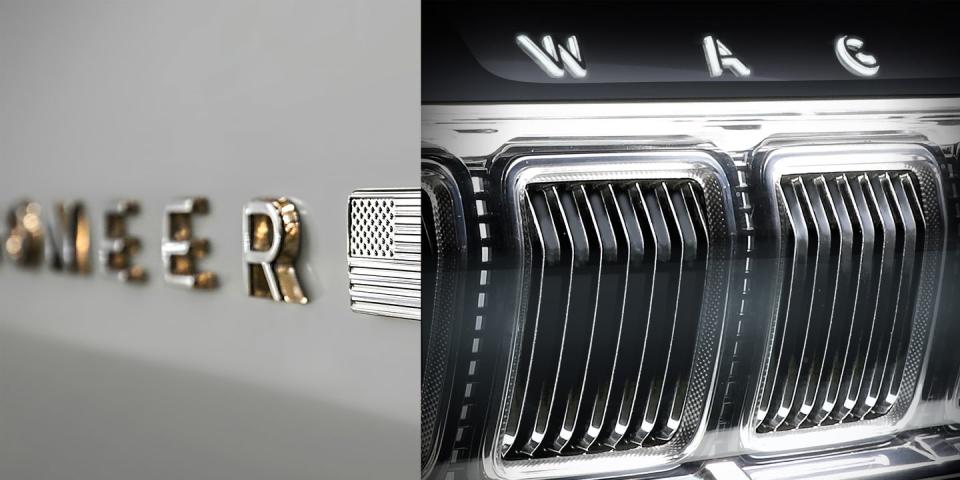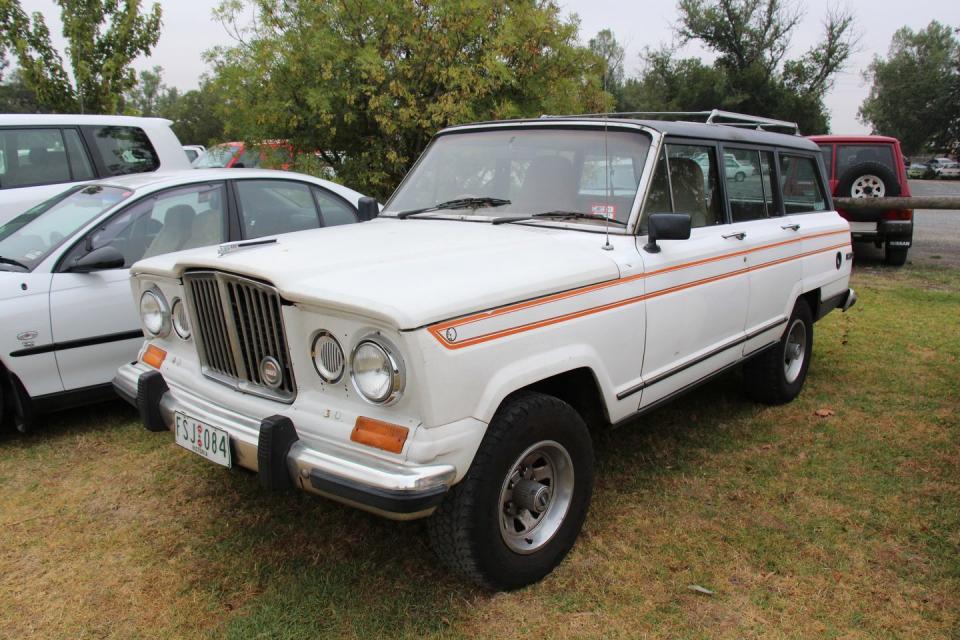The Jeep Grand Wagoneer Is (Almost) Back!

In the Jeep world, there a few vehicles that excite people more than the Wagoneer. Most of us remember the ‘80s and ‘90s versions, which at the time, at least to me, didn’t seem very cool. There was a family in my neighborhood with a few of them that we teased, petulant middle schoolers that we were. Now they would be kings.
We’ve heard rumors and speculation around a new Grand Wagoneer for almost 10 years now, but it looks like Jeep is finally ready to show off a new version for the new age. In the past week the company dropped four teaser images, and says the new vehicle will be unveiled on September 3. For now, we decided to look back on the Wagoneer, which was produced continually, though by different automakers, from 1963 to 1991. It was the proto-sport utility vehicle.

The first Wagoneer was built by Willys-Overland Motors, which at the time was owned by Kaiser Jeep. It replaced the Jeep Station Wagon, in production since 1946. It was designed by Brooks Stevens but unlike its predecessor, it looked and acted more like a car, though it was still built on a truck frame. The Wagoneer was offered in two-door, four-door and panel delivery models.
Early Wagoneers featured Willys Tornado 3.8-liter straight-six making 140 hp with either a three-speed automatic or manual. It was offered with rear-wheel drive or part-time four-wheel drive without a center differential but with manual locking front hubs. Independent front suspension was standard on the rear-drive models and optional on 4WD. It later became available with a 5.4-liter AMC V8 making 250 hp.
As opposed to the rest of these types of workhorse vehicles at the time, the Wagoneer was positioned as more luxurious alternative.
In early 1963, Willys Motors changed its name to Kaiser Jeep Corporation.

In 1966, the Super Wagoneer was introduced with a full-width dash and even more luxury inside. Initially it used a 270-hp AMC V8 with a four-barrel carburetor. Inside buyers got a push-button radio, tilt steering wheel, air conditioning, a power tailgate and more, features that weren’t even offered on other vehicles of the type. It was the first luxury SUV.
AMC acquired Kaiser Jeep in 1970 and made some changes to the Wagoneer, improving its on-road manners and replacing the metal grille with a new egg-crate plastic one. At that time it was using a Buick 350 under the hood, but after 1971 that motor was replaced by a (360-cu-in) 5.9-liter AMC V8 and eventually the (401-cu-in) 6.6-liter V8.
In the mid ‘70s full-time four-wheel drive called Quadra-Trac joined the options, the two-door version came back, front disc brakes were added as standard and AMC added stronger cross members and boxed side rails. After the introduction of the Cherokee, the Wagoneer moved further upmarket. In the late ‘70s it stickered for more than $10,000 — Cadillac territory at the time.
In the ‘80s the Wagoneer line was expanded to three models: Custom Wagoneer, Brougham and Wagoneer Limited. That Limited trim featured an automatic transmission, air conditioning, power windows and locks and driver’s seat, extra thick carpeting and more.

In 1984 the Grand Wagoneer was introduced while the Wagoneer Limited nameplate became a trim of the Jeep Cherokee. Jeep was still building the Wagoneer Custom, sans woodgrain trim, but it was dropped by the end of the year.
Incremental changes came throughout the late ‘80s including an improved handling package, a new grille and hood ornament, an updated audio system and a power sunroof. The last model AMC developed was 1987, which was also the 25th anniversary of the design. It got a (360-cu-in) 5.9-liter V8, self-sealing tires, a new sound system and woodgrain sides in marine teak.
Chrysler bought AMC in 1987 but the Grand Wagoneer stuck with the AMC V8 and minimal changes elsewhere in 1988. It was still a very profitable vehicle.
The 1989-‘91 Jeep Grand Wagoneers received a bunch of upgrades to the wood paneling, wheels, air condition compressor, rear washer and gained the overhead console from Chrysler’s new minivans. It also got new paint colors including the rare hunter green metallic hue in 1991.
Grand Wagoneer sales plummeted as gas prices rose and only 1,560 were produced in 1991. The old SJ platform would have to have been redesigned to comply with new regulations. The last few were sold with gold badges inside noting the “Final Edition Jeep Grand Wagoneer.”

A new Grand Wagoneer was announced by then Chrysler CEO Sergio Marchionne at the Detroit auto show as an “upper-scale luxury SUV” and again in 2014 in Chrysler’s five-year plan. It was delayed and delayed again, but in December of 2019 rumors started swirling again of a body-on-frame SUV using the Ram’s platform.
Now there’s plenty of room for another full-size seven-seat SUVs in the market, as midsize ones try to cram in third rows. Besides GM’s suite of vehicles, there are two from Ford (Expedition and Navigator), a few from Nissan, a few from Toyota, not to mention the luxury and German set. The only thing that matters to us is that the new Grand Wagoneer has a retro feel and big, overlanding-style capability. I’ll say one more thing. If at least the show cars don’t come with woodgrain sides, we’re burning this whole place to the ground.
We’ll see the new one on September 3, and we expect it as a 2022 model year.

 Yahoo Autos
Yahoo Autos 